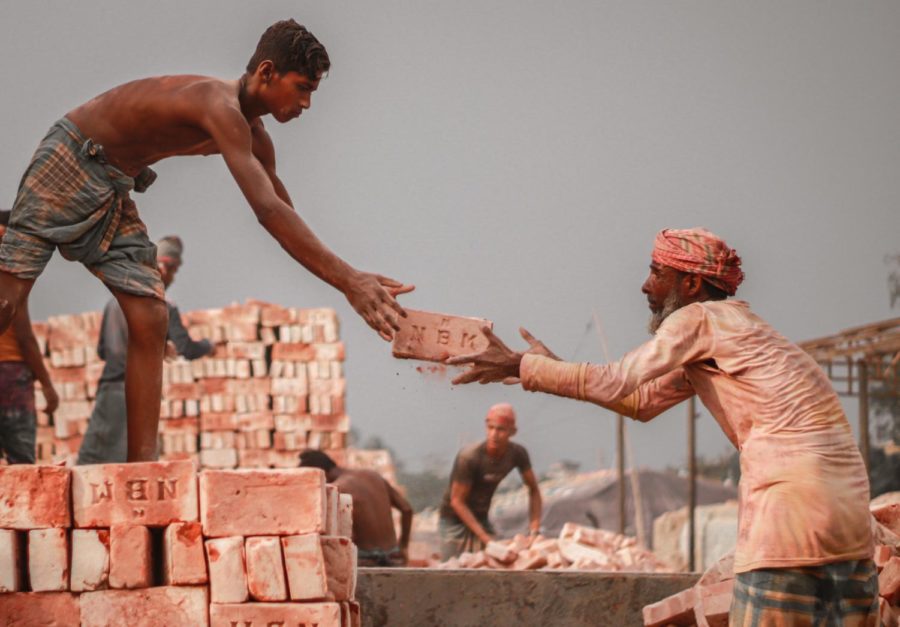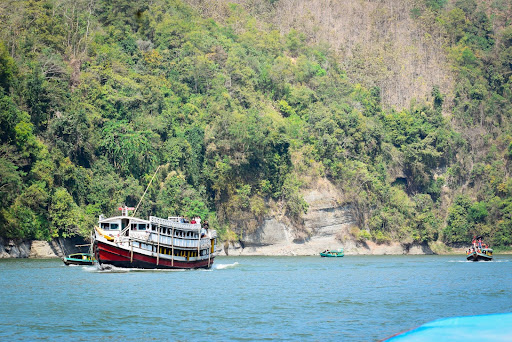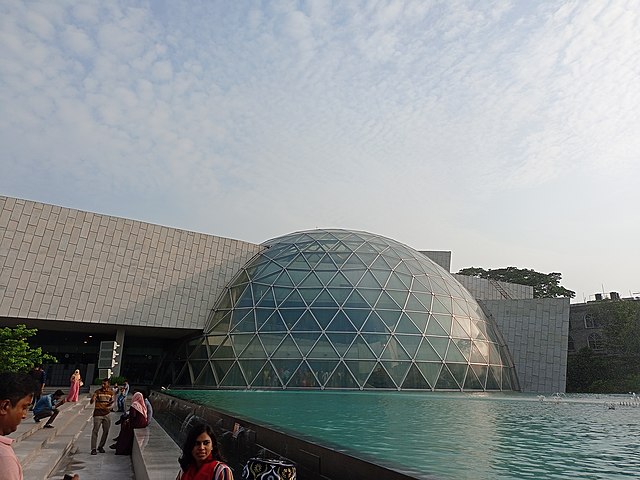‘Amar Sonar Bangla’: My Golden Bengal
A picture guide of the tourist spots of Bangladesh, a low-income country steadily rising out of its third-world country title.
An elderly man and a young man build a part of Bangladesh. (https://unsplash.com/photos/D8KUJbEc3cQ)
“I think people around the world need to know more about us. And what better way for them to know about our country than to visit it? Bangladesh has exceptionally beautiful places to visit that are tourist-friendly. We are getting more visitors gradually, and we welcome them with warm hospitality,” said Mahir Shahriar, a student at North-South University, in the class of 2025.
Bangladesh, which recently celebrated 51 years of independence from Pakistan, is a small country majorly surrounded by vast India, and shares the limelight with Myanmar (former name Burma). Bangladesh was placed a generation behind in its growth because of the Independence War (1971). During the war, the Pakistani Liberation Army launched Operation Searchlight and killed almost three million educated individuals in Bangladesh in an attempt to impede the rise of the nation in economic standards. But after 51 years of being a third-world country, Bangladesh is starting to rise in its economic status. With its tourist spots and the recent installation of its first metro rail (the third in Asia), Bangladesh’s gross domestic product (GDP) is expected to grow by 7.2% in 2022 and 6.6% in 2023, according to the Asian Development Bank.
Throughout this article, there will be many cultural and historical tourist spots and bridges/trains that have contributed to Bangladesh’s new rise in their economy.
Economical Highs
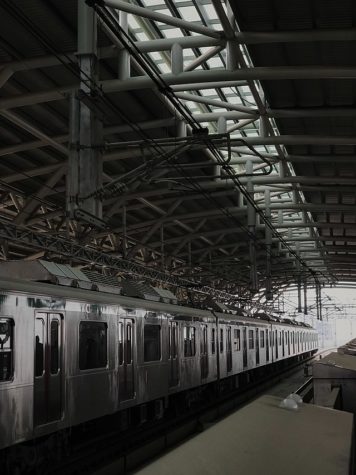
The Dhaka Metro is a planned subway system that will tackle Dhaka’s infamous traffic congestion. Bangladesh partnered with the Japanese government to create a subway system as part of The Strategic Transport Plan (STP). The STP is a 20-year-long plan to decrease congestion and increase Bangladesh’s commercial economy. The first phase of this plan has already started, with the MRT Line 6 opening to the public on December 28th, 2022. This individual line stretches over 40 miles and serves 16 stations.
Padma Bridge is the longest bridge in Bangladesh, hanging over the Ganges river. It also has the highest depth of any bridge in the world at 127 meters. This project was widely considered to be challenging as the Padma (Podma) River is one of the most ferocious rivers in the world but despite all challenges, the bridge opened for public use on June 25th, 2022. The Padma Bridge is expected to raise the GDP of Bangladesh, opening a more accessible route between 21 districts. With an increasing GDP in goods and services, it can be assumed that this bridge will increase tourism rates. People used to take airplanes or ferries from Dhaka to Khulna, but now with the Padma Bridge, the journey takes about 4 hours rather than the previous 8-10 hours.
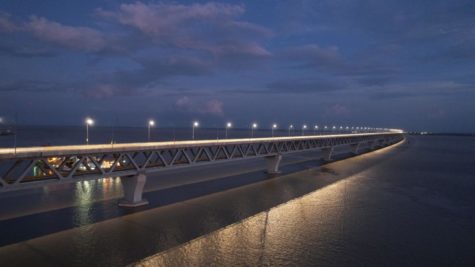
Although urban life is slowly improving, the natural wonders of Bangladesh remain as beautiful and preserved as the government could keep them.
“People have lots of misconceptions about Bangladesh. The majority of the time people think it’s a poor and polluted country. So I think it’s a great step to clear those misconceptions and maybe the next time tourists visit Bangladesh, they’ll have positive feedback,” said Nayla Zaman, a student at Willes Little Flower School & College, in the class of 2024.
Natural Wonders
“The American perception of Desi culture is dumbed down into stereotypes and ignores how each country is unique in their own way,” said Maheen Rassell ’23.
Rangamati, a town in southeastern Bangladesh, is located near the Karnaphuli River. Although it’s a rice-milling and cotton-weaving town, the beauty of Kaptai Lake makes it a fantastic tourist spot. The Kaptai Lake is an artificial lake, created in 1960 for cleaner energy. But an afternoon on a boat on the largest lake in the country surrounded by natural luscious greenery makes you forget that this lake was man-made. The red Hanging Bridge of Rangamati will help you get back to the rest of your trip.
Shada Pathor, a beach in Sylhet, is decorated with what seems to be hundreds of thousands of white rocks. “Shada pathor” literally translates to “white rock,” encompassing the scenic location well. This beach lands in the border area of Bangladesh and India and is filled with hills, rivers, and little waterfalls. You can take a boat trip and relax as the crystal clear water skates by the edge of your boat.
Cox Bazar, the longest natural beach in the world, is located right here in this majorly unknown country. Although Cox Bazar is a city with fishing towns on the southeast coast, it has an endless sandy beach with monasteries and tropical rainforests. A huge tourist attraction, the city has raised several 3-5 star hotels to host tourists right on the beachside. People travel from hundreds of miles away just to spend a few days at this beach and explore the surrounding area.
Sajek Valley is one of the most popular tourist spots, known for its well-preserved natural beauty. Mountains, forests, and grasslands surround the valley. Sajek was unexplored for a very long time, but it’s becoming a popular spot to visit for natives as well as outside tourists. With its mountainous heights, dreamy clouds, and soft sunsets, you can’t find a better place to achieve inner peace, feel one with nature, and take stunning pictures.
“Bangladesh is so underrated despite being so close to nature and being aesthetic. As a Bengali American, it saddens my heart to see that Bangladesh almost always goes unnoticed,” said Tasnim Haque ’24.
St. Martin’s Island is located in the northeast of the Bay of Bengal, a few kilometers away from Cox Bazar. Although small, St. Martin’s Island is incredibly beautiful. With fresh blue water, multitudinous corals, endless sandy beaches, and coconut trees, you will be baffled why Bangladesh wasn’t on your travel list until now. You can take a boat ride, enjoying the clear water and watching the island glimmer from afar.
Sreemangal, the tea capital of Bangladesh, is known for its vast tea fields. As far as your eye reaches, you can see only fields and fields of lush green. Hills of the highest quality tea plantations will be found here. Sreemangal is a city in the Sylhet Division and imports 300-400 million BDT (Bangladesh taka, its currency) per year. You can visit some cafes on the grounds and try out samples of the varieties of teas that they grow.
Boro Komoldoho Ruposhi Waterfalls is a hidden treasure. Though it takes almost a half an hour hike from Boro Darogar Hat in Chittagong, when you arrive at the waterfalls, the sound and the sights will envelop you. All around you are mountains and leaves and the sound of water dripping into the stream. It is quite a tourist attraction for the adventurous types, but also a scenic place for photography, both for personal and professional pursuits.
Bandarban, “the dam of monkeys,” located in one of the three hill districts, is a hub of Buddhist sculptures and temples. Bandarban in itself is a natural beauty, surrounded by greenery and wildlife. There are waterfalls and mountains and historical architecture to visit. Although the most remote and least populated destination, it hosts the lifestyles of 15 different ethnic groups. With spacious hotels, tourists can stay as long as they desire if they have official permission to enter the Bandarban town.
“Many people don’t realize how beautiful Bangladesh is. Shedding some light on these locations shows a side of Bangladesh that most people tend to overlook,” said Shad Talha ’23.
Sundarban is a real mangrove forest spread out across India and Bangladesh. The Sundarban is a safe habitat for many endangered native species, such as the Royal Bengal Tiger, the Ganges dolphins, the Irawadi dolphins, the estuarine crocodiles, the endemic river terrapin, and many more. It is the only habitat for the critically endangered Royal Bengal Tiger, the national animal of Bangladesh; its population number currently stands at 440. It is best to visit the Sundarban in the winter as the weather will be more forgiving, but if you happen to visit in the summertime, you might catch tigers sleeping along the banks.
Historical Spots
The Bangabandhu Military Museum was established in 1987 but was reestablished at Bijoy Sarani, and opened on January 6th, 2022. It is located at the entrance of Mirpur in Dhaka. This museum is meant to celebrate Bangladesh’s Liberation Army and its history, especially from the 1971 Independence War. It contains galleries of the army, the navy, and the air force. The museum has exhibition halls, cineplexes, amphitheaters, seminar halls, restaurants, coffee shops, and parking facilities.
Bagerhat is a historical town in the Khulna division. In the 15th century, a famous Sufi Khan Jahan Ali settled in this town and established its name. People from all over the country come to visit his tomb and mosques that were constructed in his honor. The largest mosque in Bangladesh, “The Sixty Dome Mosque” which was built by Khan Jahan Ali himself, can be found here. It’s considered to be one of the most impressive Muslim architecture in South Asia.
Ahsan Manzil is a historical palace in Dhaka, the capital of the country. It is the official palace and seat of the Nawab of Dhaka, a title now extinct. It was given to the head of the family and estate by Queen Victoria. The Nawabs of Dhaka, created in 1843 and ended in 1952, were the closest equivalent to Bangladeshi royalty. Ahsan Manzil is a huge pink palace that is a look into a huge part of Bengali history during British rule.
Paharpur is the haunting ruins of monasteries and Buddhist viharas. It is considered to be one of the most important archaeological sites in the country. The Somapura Mahavihara is the most well-known of all the monasteries. Paharpur is a collection of the largest ancient Buddhist culture south of the Himalayas. These monuments not only preserve an entire culture, quite different from the one majorly found in the country, but they preserve a union that has lasted for hundreds of years between multiple religious and cultural groups.
‘Amar Sonar Bangla,’ My Golden Bengal. It’s the national anthem of Bangladesh. Written in 1905, it changed for the next few decades until it was finally adopted in 1971 when Bangladesh won its freedom. “My Golden Bengal” sings of the natural beauties of the country. Today, Bangladesh is a beautiful country rising in its economic status despite all odds while maintaining its natural beauty. As a testament to its national anthem, its mango orchards and wide open fields remind Bengali people of home.
Today, Bangladesh is a beautiful country rising in its economic status despite all odds while maintaining its natural beauty.
Fairuz Omar Raya is a Features Editor and Instagram Editor for ‘The Science Survey.' She believes that journalism is a privilege that allows voices to...

